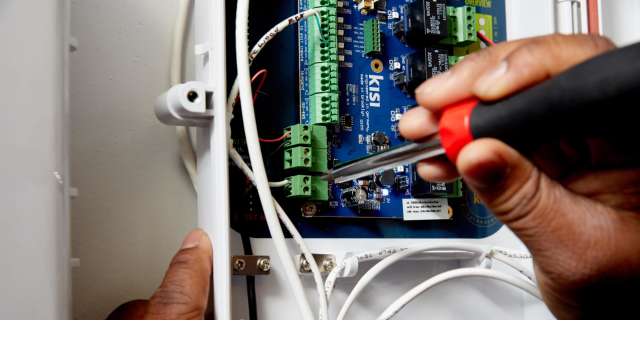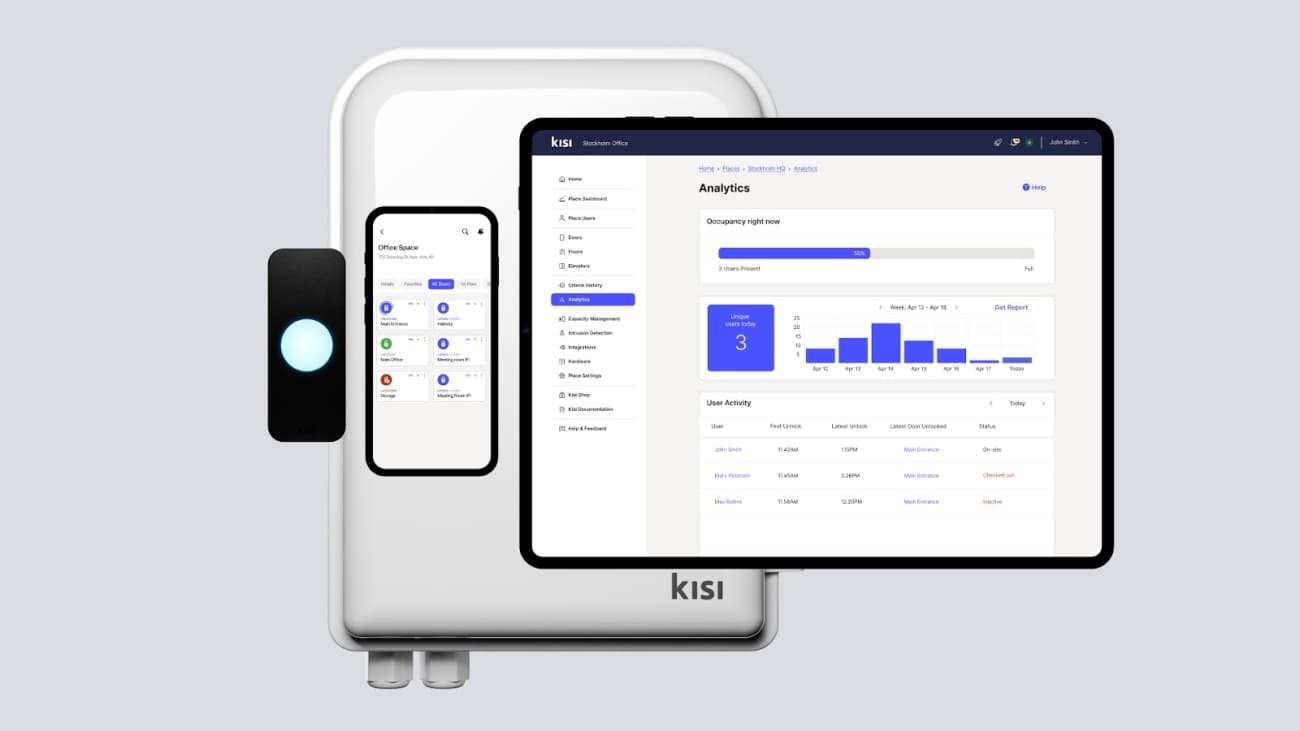Choosing the right access control system is essential for securing your business, but understanding the costs can be challenging. Some parts of the setup process can often be overlooked, such as the installation of electrified locks and hardware. To understand the overall cost of installing an access control system, we will examine each necessary part.
The system’s price can vary based on factors like the number of doors, the chosen hardware, and the type of keyless system, like a key card, biometric, or mobile-based solutions. The two greatest contributing factors to the installation costs are materials and labor, yet there can be some secondary costs that may not be itemized on a quote.
In this article, we break down the costs associated with access control systems, including per-door pricing, installation fees, and ongoing expenses, so you can make an informed decision. Plus, see the type of pricing solution Kisi offers and how it compares to more traditional system pricing.
Average access control system prices #
Before diving into specific keyless access control solutions, let’s review the typical costs businesses can expect. The cost of an access control system varies widely based on the type of technology used, the number of doors, and the additional security features. For example, cloud-based systems tend to have lower upfront costs but often include ongoing subscription fees, while traditional key card and biometric systems often require a higher initial investment.
Average industry price for access control system components #
Access control systems typically include the following components with their associated price ranges:
- Locking hardware, e.g., electronic locks ($20-$900)
- Access control accessories, e.g., motion sensors ($10-$500)
- Door reader ($80-$1,200)
- Door controller ($180-$3,500)
- Software license or Maintenance cost ($0-$50 usually charged per door per month)
Average access control system costs per door #
Most access control solutions charge on a per-door basis, with pricing influenced by system complexity. Let’s look at a specific one-door setup to understand the average unit cost.
- Door reader and hardware: $600-$1,500 per door
- Installation without existing locks: $1,200- $2,500 per door
- Installation with existing locks in working condition: $500-$1,500 per door
- Basic door license: $600-$1,600/year per door
So, the total average cost for setup, including the first year of operation, is $3,850 USD.
Average costs by access control system type #
To better predict the cost, consider the access control system type you need. Are keypads, key cards, mobile access, biometric systems, or a hybrid solution like Kisi the best choice for you? Explore the average cost per door for different access control systems, including price ranges, use cases, and pros and cons below.

Keypad access control systems cost
- Cost per door: $1,000–$2,500
- Best for: Small businesses, residential buildings, and low-security areas.
- Additional costs: Minor, only maintenance and potential software updates. Yet, big potential losses due to the minimal security.
- Pros:
- Affordable and easy to install.
- No need for physical credentials.
- Works well in low-traffic environments.
- Cons:
- Minimal security (PINs can be easily shared or stolen).
- No audit trail of individual user access.
Key fob and keycard systems cost
- Cost per door: $1,500–$3,500
- Best for: Traditional offices and commercial buildings.
- Additional costs: $5–$10 per key fob/card and likely software licensing fees ($30–$100/month).
- Pros:
- Commonly used and widely supported.
- Reliable and works offline if needed.
- Relatively easy to issue and revoke access.
- Cons:
- Forgotten, lost, not returned, or stolen key cards and fobs pose security risks.
- Buddy punching potential and not-so-reliable data.
- Requires ongoing card or fob replacements.
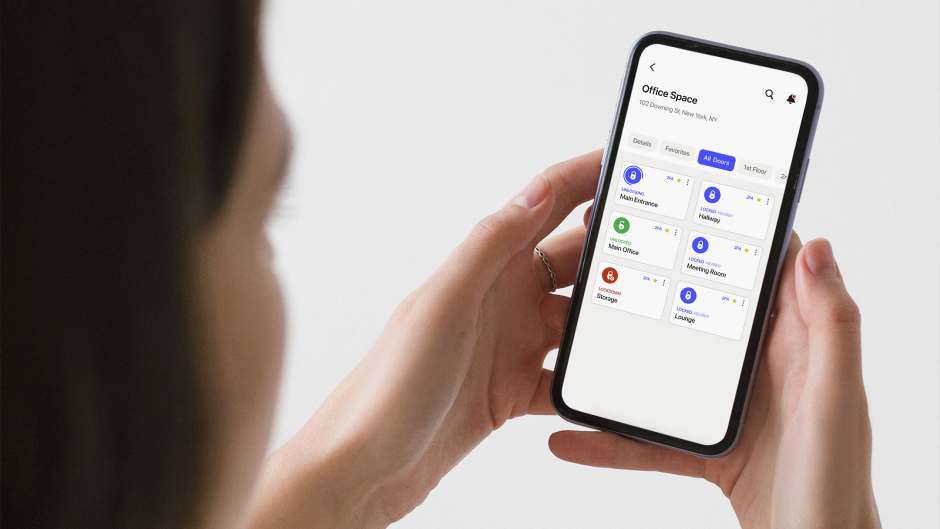
Mobile access control cost
- Cost per door: $2,000–$4,500
- Best for: Coworking spaces, gyms, modern offices, and most multi-location businesses and businesses needing remote access control.
- Additional costs: Subscription fees ($50–$150/month), potential mobile app licensing.
- Pros:
- No physical credentials, reducing replacement costs and security risks.
- Remote access control and real-time activity logs.
- Integrates with security and smart building systems.
- Cons:
- Requires internet access for full functionality.
- Some systems have recurring fees for cloud management.
Biometric access control cost (fingerprint, facial recognition, retina scan)
- Cost per door: $3,500–$10,000+
- Best for: High-security facilities like data centers, research labs, and government buildings.
- Additional costs: Database management, system calibration, ongoing software licensing.
- Pros:
- Eliminates the need for physical credentials.
- Provides the highest level of security.
- Tracks individual user activity with 100% accuracy.
- Cons:
- High upfront cost and maintenance difficulties and expenses.
- Privacy concerns and compliance issues.
- Can be affected by environmental factors (e.g., wet fingerprints).

Hybrid & flexible systems cost (supports key cards, fobs, and mobile)
- Cost per door: $2,500–$6,000
- Best for: All businesses wanting a flexible access solution that supports multiple credential types and remote management.
- Additional costs: Cloud subscription ($50–$200/month), optional software and hardware add-ons.
- Pros:
- Users can choose their preferred credentials (key card, mobile, touchless access, etc.).
- Analytics, remote management, and integrations with security platforms.
- Scalable for growing businesses.
- Cons:
- Higher initial investment than traditional keycard systems.
- Require cloud-based subscription.
Other cost considerations
While upfront pricing is a key factor, businesses should also account for:
- Installation fees: $500–$2,000 per door (varies by wiring complexity).
- Software licensing and maintenance: $30–$200 per month.
- Credential replacement costs: Key cards/fobs ($5–$50 each).
Factors affecting access control system costs #
Several key factors beyond the initial hardware purchase and installation influence the total cost of an access control system. Let’s dive into these factors so you can make informed decisions and plan your budget accordingly.
Number of doors and locations #
Access control system costs vary depending on the number of access points and users within an organization. Each entry point, such as a door, turnstile, or elevator, can require some type of hardware, including readers, controllers, and wiring. As the number of doors increases, hardware and software costs scale accordingly.
Some providers offer discounts for multi-door installations, but overall, a larger system will require a higher investment. It can also see a bigger and quicker ROI thanks to the global management and monetization possibilities modern access systems offer.
System type: Cloud-based vs. on-premise systems #
One of the most important considerations is whether to deploy a cloud-based or on-premise access control system. Cloud-based systems have lower upfront costs since they don’t require on-site servers, and they allow for remote management. However, they usually come with monthly or annual subscription fees for software access, support, and updates. Depending on the provider and features, these costs can range from $30 to $200 per month.
On-premise systems require a higher initial investment in servers and IT infrastructure, but they don’t have ongoing subscription fees. While they provide greater control over data and security, they don’t often allow for remote management and may require in-house IT staff for maintenance and updates. Explore the differences in cloud vs on-premise server security.

System functionalities #
There’s a cost difference between simple access systems and advanced ones that expand into all-in-one security solutions. This basic form simply enables your employees and visitors to enter the premises and is known as standalone access control (the system is programmed at the door it controls).
Most modern companies, on the other hand, require an integrated security platform that, besides access control, includes video surveillance, intrusion detection, visitor management, and advanced analytics and reporting. Even though the initial investment in the system might not be drastic, advanced systems often necessitate higher software costs. However, they do automate and streamline your business operations and ensure all security aspects are in sync.
Deployment and installation complexity #
Installation complexity can further impact pricing. Retrofitting an existing building with access control can require additional wiring, electrical work, and system modifications, all of which add to labor costs. On the other hand, wireless or cloud-based systems may reduce installation expenses by eliminating the need for extensive cabling and infrastructure changes.
Kisi, for instance, offers some accessories to decrease wiring costs and several deployment options. These tailored migration options enable businesses to keep existing wiring, door hardware, or credentials to lower costs.
Credential costs #
The cost of credentials is another factor to account for. Traditional key cards and fobs typically cost between $5 and $50 per credential, and businesses may need to budget for time, resources, and replacements over time. Mobile-based access systems often include digital credentials within the software package. Still, some providers charge per-user fees for additional mobile access, like employee badges in Apple Wallet.

Integrations with other systems #
Integration with other security systems can also influence overall costs. Many businesses want their access control to work seamlessly with security cameras, alarm systems, and visitor management platforms. While this improves security and efficiency, ultimately cutting operational costs, some providers might charge extra for API access, third-party integrations, and custom configurations.
Security and compliance #
For businesses in regulated industries, compliance with security standards and regulations is critical. Healthcare, finance, and government organizations, for instance, must meet industry-specific standards like HIPAA, PCI-DSS, and SOC 2, requiring advanced security features such as multi-factor authentication (MFA), encrypted credential storage, and detailed audit logs. These compliance-ready systems typically come with higher software and certification costs.
Cybersecurity is a growing concern for businesses handling sensitive data or valuable assets. Modern businesses often decide on cloud-based access control since it offers end-to-end encryption, zero-trust security models, and regular software updates to prevent breaches. Some companies prefer on-premise solutions for maximum security. The debate on what type of system is more secure is ongoing, but the higher IT and maintenance costs of on-premises systems are a given.
Kisi's pricing #
Recognizing the specific needs of different organizations and industries, Kisi is constantly working on tailoring our pricing plans. At the moment, Kisi offers general security pricing for businesses depending on their needs, tailored pricing for enterprises, and industry-specific pricing plans for fitness businesses and coworking spaces.
Kisi software pricing #

Starting at $99 per month, businesses get access to Kisi’s One Security Platform, the central hub for managing all Kisi security solutions. This includes event and user data visibility, along with access to the admin dashboard, where powerful tools like access control, visitor management, intrusion detection, and video surveillance can be purchased based on your specific needs.
Each service is modular and flexible, with licensing tailored to factors like the number of locations and the feature sets you choose, so you only pay for what your organization requires. For example, the access control license includes robust capabilities such as global access management, automated schedules, mobile credentials, and granular restrictions. Check out our software pricing page for more details or get a tailored quote.
Kisi hardware pricing #
Door controller
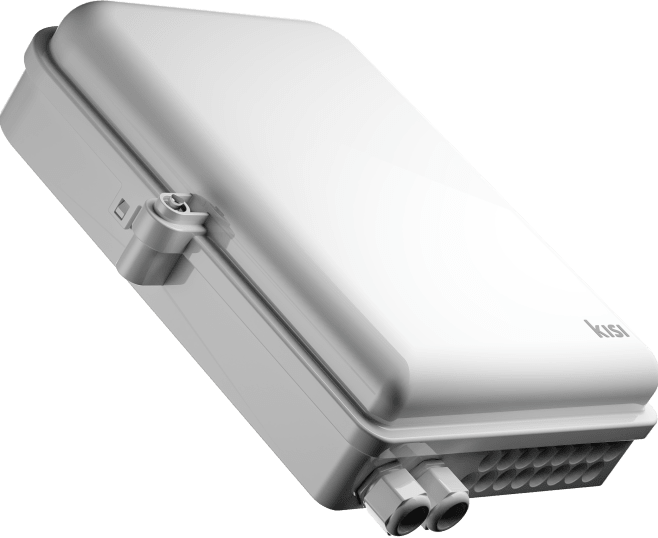
Priced at $850 for Kisi One Security Platform users, the brain behind the Kisi system, the Controller Pro 2, enables you to operate your spaces remotely, managing security and access control from Kisi’s intuitive dashboard. It’s the only piece of hardware you need if you’re looking for remote management and mobile app unlocks.
Door reader
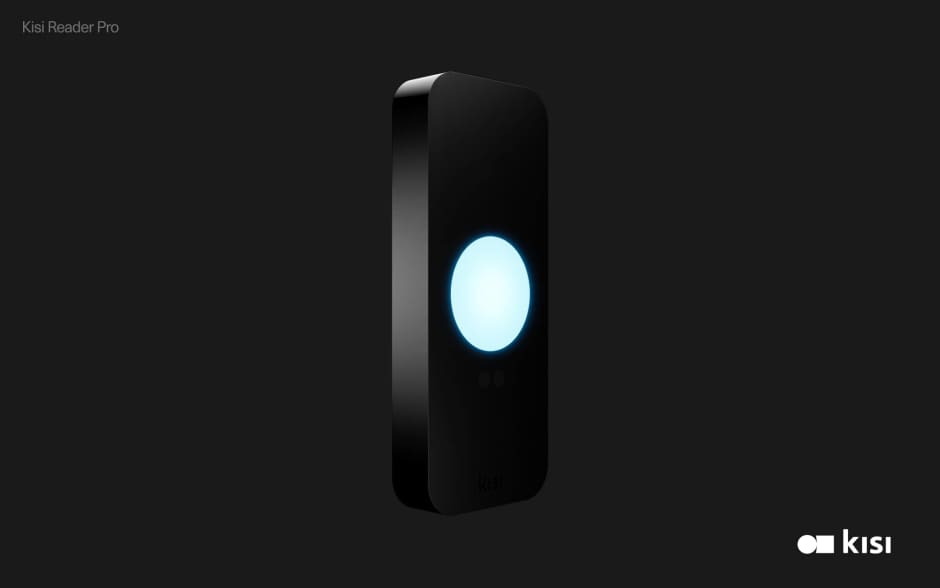
Built for convenience, compliance, and compatibility, the Reader Pro 2 ($475) and Terminal Pro ($595) offer flexible access methods to Kisi users. Both door readers support both mobile, traditional, and 3rd party access credentials, with the Terminal expanding on the Reader Pro functionality with QR codes.
Deployment accessories

Kisi offers various deployment options and accessories to reduce the costs of companies migrating their legacy access control system to the cloud. The Wiegand board costs $150 but can save thousands by enabling businesses to keep their Controllers or reuse their readers and credentials. To save on CAT6 cables and reuse your current wiring, consider purchasing the Two-wire Switch ($499) and Adapter ($189).
Keycards, fobs, and tags

If you prefer traditional physical credentials, you can choose between the different Kisi credentials that utilize high-frequency transmission and are available in multiple formats, including cards, tags, and fobs. If you already have RFID or NFC badges in place, you can continue using them with your current Wiegand or new Kisi reader. Contact our team for more details.
Installation costs #
Access control installation costs can vary significantly based on the complexity of the system, the building’s layout, and regional labor rates. Installation typically involves purchasing and setting up hardware, running necessary wiring, configuring the software, and testing the system to ensure optimal performance. Additionally, some systems may require integration with existing security infrastructure, adding to the overall cost. Let’s break down the installation costs into key components to gain a clearer picture of the total investment.
Materials #
The term “materials” is an all-encompassing term for every piece of hardware that’s installed in your access control system. This can include your lock, power supplies, wiring, and ancillary accessories, such as keypads or push to exit buttons. However, even wire stripping, zip ties, and other miscellaneous parts are calculated into the cost of materials.
Of course, you may see a quote from an installer and decide that you want to research the cost of materials on your own. Typically,you will find similar materials online for lower prices than your installer quoted you. However, there is a reason for this. Installers carefully source their materials from trusted distributors who they develop relationships with over time.
When an installer provides materials, they can do a few things:
- They know that the materials they are providing are of sound quality, despite the possibly higher price.
- They may be able to provide a warranty on the materials provided.
- They work with the same materials over and over again, so they know exactly what they’re doing.
If you decide to purchase materials yourself from Amazon or some other hardware provider:
- The materials may not be high quality and therefore break down faster than normal, especially for cheaper options.
- The installer will not be able to provide any type of warranty for these provided materials and may assume no responsibility for them.
- The installer may not know exactly how to work with the materials.
Letting a locksmith or other installation professional purchase the materials for your installation is highly recommended. Although it might cost more, it will lead to a high-quality installation that will enable your access system to run smoothly for a longer time.
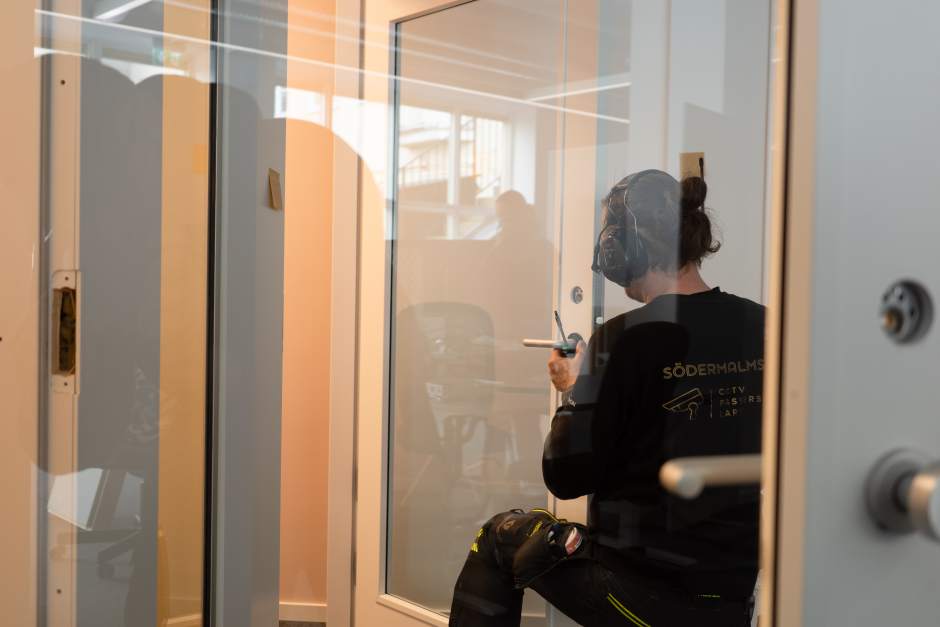
Labor #
Labor costs encompass the professional services required to install and set up the access control system. This includes mounting readers, running wiring, installing control panels, and sometimes even programming the software and performing system tests. Each installer charges different rates, and the price can vary based on geographic location and the type of installer doing the work. For instance, a company that provides IT services may charge up to $300 per hour, while locksmiths may charge anywhere from $80-$200 per hour, depending on their services.
Installers typically quote a flat rate labor charge, meaning the installers are estimating the number of hours it will take to complete the installation. The installation may take more or less time than estimated. However, your labor price is locked in.
Most companies see flat charges as a benefit because when you agree to a price, then you are presumably comfortable with that price. It’s a win-win situation. It’s great if the installation takes less time than the installer calculated since you can ensure the installation is done well and you can get started with your new access system. If the installation takes longer than the installer estimated, you don’t need to deal with a price increase due to time and labor. On the other hand, if a variable price is set, labor costs can quickly increase by a few hundred dollars.
System configuration and testing #
Once the physical installation is complete, the next step involves configuring the system, integrating it with existing security infrastructure, and thoroughly testing each component. This phase ensures that all access points function correctly, software settings are properly configured, and data logs correctly capture access events.
The configuration and testing process can take several hours to days, depending on the system’s complexity and the number of access points. Costs for this phase typically range from $500 to $2,000 and can cover software setup, credential registration, and initial troubleshooting to verify that the system is operating as intended. Some companies, like Kisi, offer various onboarding packages to support different needs.
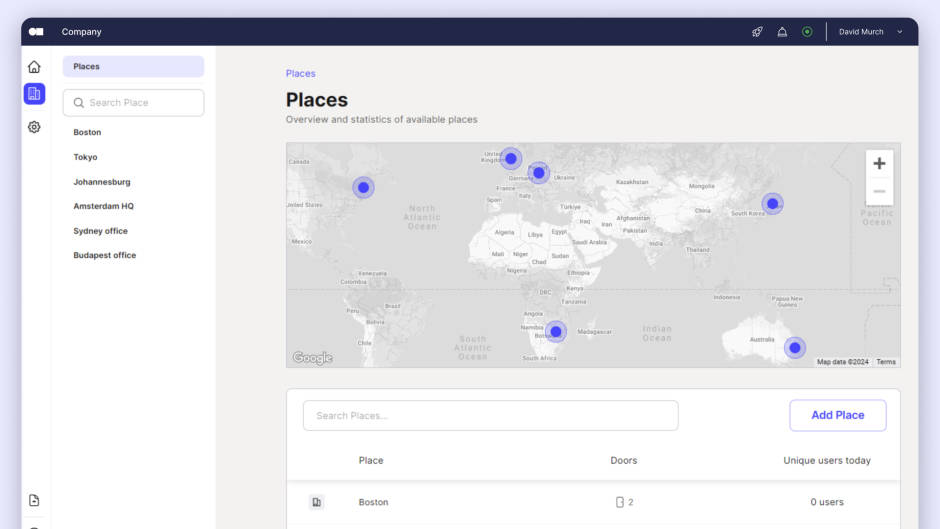
What else are you really paying for? #
The final ‘charges’ to take into account can all be filed under ‘miscellaneous.’ Even though these charges do not get their own category, they are important nonetheless. They may not be line itemized, but in reality, you’re paying for these things as well.
The first charge to consider is insurance. Most installers carry some type of insurance. This insurance can cover their workers who are on the job, any potential damage done during the installation, and various other items. Insurance costs are high for locksmith companies, which leads to increases in labor rates and markups on materials.
Another set of charges that may or may not be itemized are travel or trip charges. Most installation companies will want to make sure they are paid for the time they spend on site. This cost may not be charged for an initial visit, such as a free site survey and estimate. However, the cost of the installer’s time may ultimately be added to the final service quote. Depending on your location, parking prices for your installer may also be factored in. This is another cost that may not be itemized but can be taken into account in the final quote.
Expert advice: Supply chain security #
Below, Joe Sechman, a cybersecurity expert, points out the most obvious missing pieces in access control pricing considerations*.
Sourcing materials #
One thing Joe emphasizes heavily is the ability to control the point where secure firmware is being uploaded and encrypted. At Kisi, this is in-house at our U.S. facility.
When I think about access control costs, first, and most importantly, I think about sourcing materials. Today, supply chain security is an actual attack vector that’s very real and, unfortunately, successful and overlooked. While mainly attributed to specialized chips and default soft/firmware from nation-state threats like China, North Korea, and Russia for espionage, I can easily see a natural progression into access control device suppliers...if it’s not happening already. Especially when access control solutions become cloud-accessible, it will just be a matter of time before a high-profile client brings attention to this vector.
Joe has also investigated what the relationship between installer and sourcer means for security, saying:
I’m drawing a natural assertion that the relationship between an installer and sourcer implies better quality, so it will also imply better security to boot, in regard to where all of the parts are sourced.
On a similar note, Joe suggests that access control systems should have strong, trusting relationships with their partners, stating:. A particular process that covers security vetting, to reinforce the rigorous evaluation that partners go through before becoming an official partner, like a background check, would add some additional peace of mind and add to the value of implementing such a forward-looking solution, like Kisi, for customers.
At Kisi, we program, package, and ship the controlling devices to the customer directly from our warehouse. The integrator only visits a client's location to set up their electric door hardware, connect Kisi, and test the setup, and never adds custom firmware or software. As such, there is no entry point for them to build back-doors. However, what we do see is that clients have no choice but to trust the integrator who has been sent and that when he is working in their IT room that there is no malicious intent. In the future, we expect integrators to be more IT-facing and, as such, to comply with cybersecurity audit regulations and limitations.
*Quotes edited for clarity/readability.
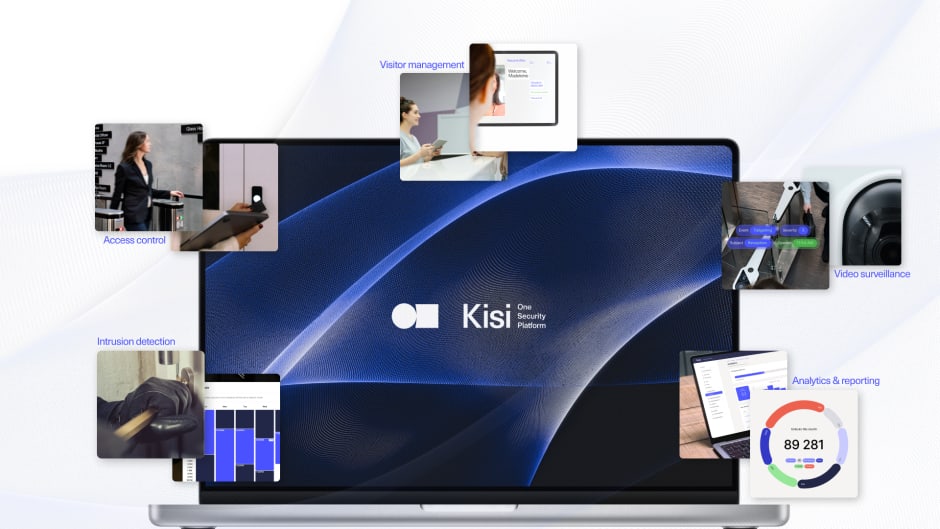
Will your costs fit the average access control system price #
Based on the information above, your access control system budget could be as little as $500 per standalone system or over $10,000 per door with a state-of-the-art biometric reader. However, an average access control system will range from $2,000 to $4,000 per door. Within this budget, you can implement different types of systems, primarily ones supporting physical credentials, and cover the cost of installation, hardware, and software. Remember that you might have to pay extra for additional features or setups.
Before implementing an access control system, think carefully about your safety needs, vulnerabilities, and what areas need to be secured. Consider the value, operational cost cuts, and additional revenue streams an automated access control system can introduce, and remember to calculate that within the costs. After all, your employees’ safety, asset quality, and soundness are priceless.
Regardless if you’re choosing a certified Kisi installer or you already have one in mind, we’re happy to support the installation process. Reach out to our team to get a tailored quote and get started with Kisi!
